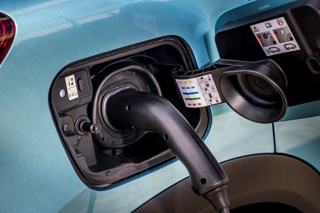The Competition and Markets Authority (CMA) has launched a more in-depth investigation into pump prices after a review found “cause for concern” in some parts of the fuel market.
An interim update will be published in the autumn.
The CMA report, published today (Friday, July 8), found that the main drivers of increased road fuel prices are the rising cost of crude oil and a growing gap between the crude oil price and the wholesale price of petrol and diesel – the so-called ‘refining spread’.
The ‘refining spread’ tripled in the last year, growing from 10p to nearly 35p per litre.
Over the same period, the so-called ‘retailer spread’ (the difference between the wholesale price and the price charged to motorists) fluctuated but remained about 10p per litre on average.
On the whole, the CMA says that the 5p fuel duty cut appears to have been implemented, with the largest fuel retailers doing so immediately and others more gradually.
However, it says that there are significant differences in price between many rural and urban areas.
The CMA was also asked by the Government to advise on possible measures “to increase the transparency that consumers have over retail prices”.
The review sets out how an open data scheme could help consumers more easily access and compare local pump price information and create new commercial opportunities for tech developers.
There may also be merit in providing more information about pump prices on motorways.
Sarah Cardell, CMA general counsel, says that recent rises in pump prices are a “major worry” for millions of drivers.
“While there is no escaping the global pressures pushing up fuel prices, the growing gap between the oil price, and the wholesale price of petrol and diesel, is a cause for concern,” she said.
“We now need to get to the bottom of whether there are legitimate reasons for this and, if not, what action can be taken to address it.”
On the whole, Cardell believes that the retail market does seem to be competitive, but there are some areas that warrant further investigation.
“These include finding out whether the disparities in price between urban and rural areas are justified,” she explained.
“This area of work is a major priority for the CMA and if we can help, we will. That’s why we are immediately launching a market study that will use our formal legal powers to investigate this in more depth.
“If evidence emerges of collusion or similar wrongdoing, we won’t hesitate to take action.”
What is driving high pump prices?
The principal drivers of rising pump prices over the past 12 months have been crude oil prices, which reached record levels in sterling terms in March 2022, and have continued to rise since then.
The dollar-terms increase in oil prices over the past year accounts for around a third of the rise in road fuel prices (20p per litre), with the fall in the value of sterling in that period adding a further 12% (7p per litre).
A growing gap between the price of crude oil entering refineries and the wholesale price of petrol and diesel leaving them (the ‘refining spread’) is also to blame, says the CMA.
This accounts for just over 40% of the growth in road fuel prices (24p per litre).
Both increased demand post-pandemic and reductions in supply (in particular due to the Russian invasion of Ukraine and the mothballing of refining capacity during Covid-19) appear to have played a role in driving up the refining spread.
However, it says that, although there are concerns from some about fuel retailers profiting from the current situation, its review found that over the course of a year, the gap between wholesale prices and retail prices (the ‘retailer spread’) has not been a significant contributor to the overall rise in pump prices.
The retailer spread is volatile, and the CMA said it was aware that in recent weeks it has grown larger. The CMA will be monitoring this closely as it takes forward the market study.
Further analysis of the relationship between wholesale and retail prices – including how rises and falls in wholesale prices are reflected at the pump – will be carried out as part of the CMA’s more in-depth study.
Pump-price competition 'broken'
Jack Cousens, the AA’s head of roads policy, said that pump-price competition in the UK is “broken”.
“A month of major wholesale price falls without a penny coming off the average pump price of petrol is testament to that,” he added.
“It is very welcome and timely that the Competition and Markets Authority probe into road fuel pricing has agreed with the AA that there is a need for further investigation.
However, the AA argues that the problem is not the gap between the oil price and wholesale price feeding through to the forecourts, but the length of time it takes for that wholesale price to be reflected at the pump.
“The fuel trade has no trouble in passing on rising costs to the customer but lags badly in passing on savings,” he continued. “It has been labelled ‘rocket and feather’ pricing, and it exists.
“Pre-pandemic, UK fuel pricing had settled into a rhythm where significant wholesale price reductions would start to be passed on in a matter of days by ‘cost-cutter’ supermarkets. That would then trigger other supermarkets and fuel retailers to start bringing down theirs or find themselves at a competitive disadvantage.
“That didn’t mean that oil company forecourts couldn’t cut their prices sooner. However, most of them just sat back waiting for the supermarkets to make the first move.
“That trigger appears to have gone, and now there is a need to find another way to re-invigorate pump-price competition.
“The AA therefore welcomes the CMA’s suggestion of more pump price transparency immediately, something the UK’s biggest motoring organisation has been calling for years.”
Evidence of failure to pass lower fuel costs on to drivers has shown itself twice this year – on both occasions with a possible fuel duty cut looming.
Ahead of the Chancellor’s 5p fuel duty cut on March 23, wholesale prices had been falling. Yet it took weeks for the tax cut to be reflected in the UK price averages.
Last week, after wholesale petrol since the Jubilee bank holiday fell 5p a litre by mid-June and is now 10p lower, a new fuel duty cut has been talked about.
Three solutions to the UK’s pump-price woes have been offered: a road fuel regulator, a tax cut and greater transparency to stimulate competition, says the AA.
A regulator would be helpful as an independent arbiter of fair prices, it argues, adding that it is ironic that OFGEM, with electric vehicle (EV) charging costs as part of its remit, has already drafted policies for protecting the EV consumer.
However, it would take time to create a road fuel regulator and, given the current cost of living crisis, a quicker solution is needed, says the AA.
The RAC also welcomed the CMA’s report and the commitment to a fuller market review.
"We are particularly pleased to see that the CMA acknowledges the gap between wholesale and retail prices has been widening in recent weeks," said RAC fuel spokesman Simon Williams.
"Regardless of the reasons for wholesale prices being what they are we continue to believe there is clear evidence, not least in the last week, that major retailers are incredibly slow to pass on falling wholesale costs, yet quick to pass on rising ones.
"The idea of allowing drivers to more easily pump prices near them may also prove beneficial."
Williams added: “The question drivers may have, however, is how long the review will take and – crucially – when they might see a change to what they pay every time they fill up.
"As each day goes by and the cost-of-living crisis is felt ever more keenly, the need for retailers – especially the largest ones – to reflect wholesale prices fairly becomes ever more urgent. We urge the Government to ensure it’s in a position to scrutinise the relationship between wholesale and retail prices. And where issues are found, it must be able to take action that quickly leads to fairer prices.”
What is a market study?
Market studies allow the CMA to use compulsory information-gathering powers to probe entire markets and can result in recommendations to Government or a full market investigation reference.





















Login to comment
Comments
No comments have been made yet.